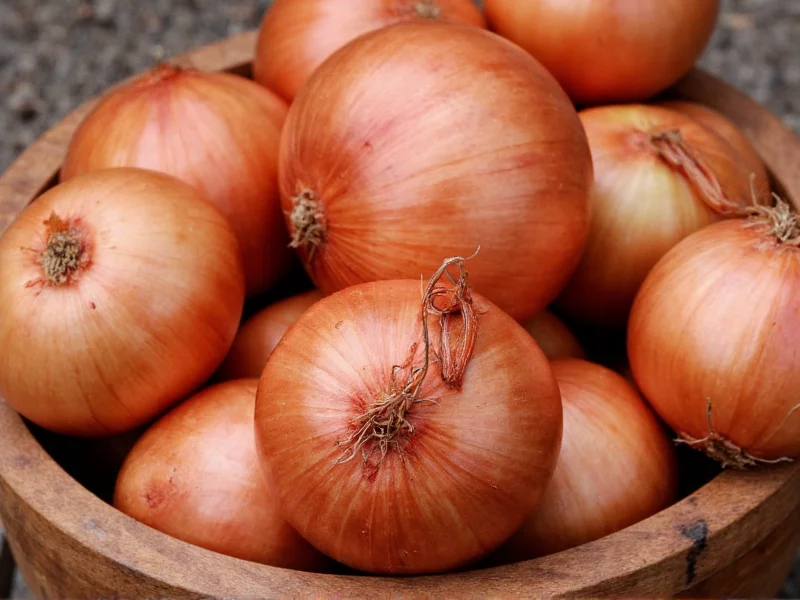When you slice into an onion, you're triggering a fascinating biochemical defense mechanism. Onions contain amino acid sulfoxides that transform into volatile sulfur compounds when their cells are ruptured. The primary irritant, syn-propanethial-S-oxide, is a lachrymatory agent that specifically targets the TRPA1 receptors in your eyes and nasal passages—receptors responsible for detecting potential irritants.
The Biochemical Reaction Behind Onion Burn
Here's the precise sequence of events that creates that familiar onion sting:
- Intact onion cells store flavor precursors called S-alk(en)yl-L-cysteine sulfoxides
- When cut, the enzyme alliinase is released from vacuoles
- Alliinase converts these precursors into sulfenic acids
- Sulfenic acids rapidly rearrange into syn-propanethial-S-oxide (the lachrymatory factor)
- This volatile compound evaporates and reaches your eyes
- It reacts with tear film to form sulfuric acid, triggering nerve endings
- Your body responds by producing tears to wash away the irritant
This entire process happens within seconds of cutting an onion. Interestingly, different onion varieties contain varying concentrations of these compounds, which explains why some onions like red onions deliver a sharper bite than milder varieties like Vidalias.
Onion "Spiciness" vs. Chili Pepper Heat: A Scientific Comparison
Though both create burning sensations, onions and chili peppers work through completely different mechanisms:
| Characteristic | Onions | Chili Peppers |
|---|---|---|
| Primary Compound | Syn-propanethial-S-oxide | Capsaicin |
| Receptor Targeted | TRPA1 (pain/cold receptor) | TRPV1 (heat receptor) |
| Sensation Duration | Temporary (seconds-minutes) | Prolonged (minutes-hours) |
| Water Solubility | Highly volatile, evaporates quickly | Oil-soluble, lingers on surfaces |
| Biological Purpose | Deterrent against microorganisms | Deterrent against mammals |
This distinction explains why water helps alleviate onion burn (washing away the water-soluble compounds) but makes chili heat worse (spreading the oil-based capsaicin). The TRPA1 receptor activation from onions creates a sharp, immediate sting that dissipates quickly, while capsaicin's TRPV1 activation produces a lingering burn that builds over time.
Factors Influencing Onion Pungency Levels
Several elements determine how "spicy" an onion will be:
- Variety: Yellow onions typically have higher sulfur content than sweet varieties like Walla Walla
- Growing conditions: Soil sulfur levels directly impact pungency—more sulfur means sharper onions
- Maturity: Older onions develop stronger flavors as compounds concentrate
- Storage: Properly stored onions become milder over time as enzymes break down
- Preparation method: Cutting technique significantly affects compound release
Research shows that chilling onions before cutting slows enzyme activity, reducing the amount of lachrymatory factor produced. Similarly, cutting near running water or using a sharp knife (which causes less cell damage) can minimize the burning sensation when handling onions.
Practical Applications: Managing Onion Pungency
Understanding what makes onions spicy allows you to control their intensity:
- For milder flavor: Soak sliced onions in cold water for 15-30 minutes to dissolve sulfur compounds
- To reduce eye irritation: Chill onions before cutting or use a fan to direct vapors away
- For cooking: Cooking denatures the enzymes, eliminating the raw bite
- For salads: Pair onions with acidic ingredients like vinegar which can neutralize some compounds
Interestingly, the same compounds that make onions irritating also provide their health benefits. These sulfur compounds have demonstrated antioxidant and anti-inflammatory properties in numerous studies, showing how nature's defense mechanisms often translate to human health advantages.











 浙公网安备
33010002000092号
浙公网安备
33010002000092号 浙B2-20120091-4
浙B2-20120091-4